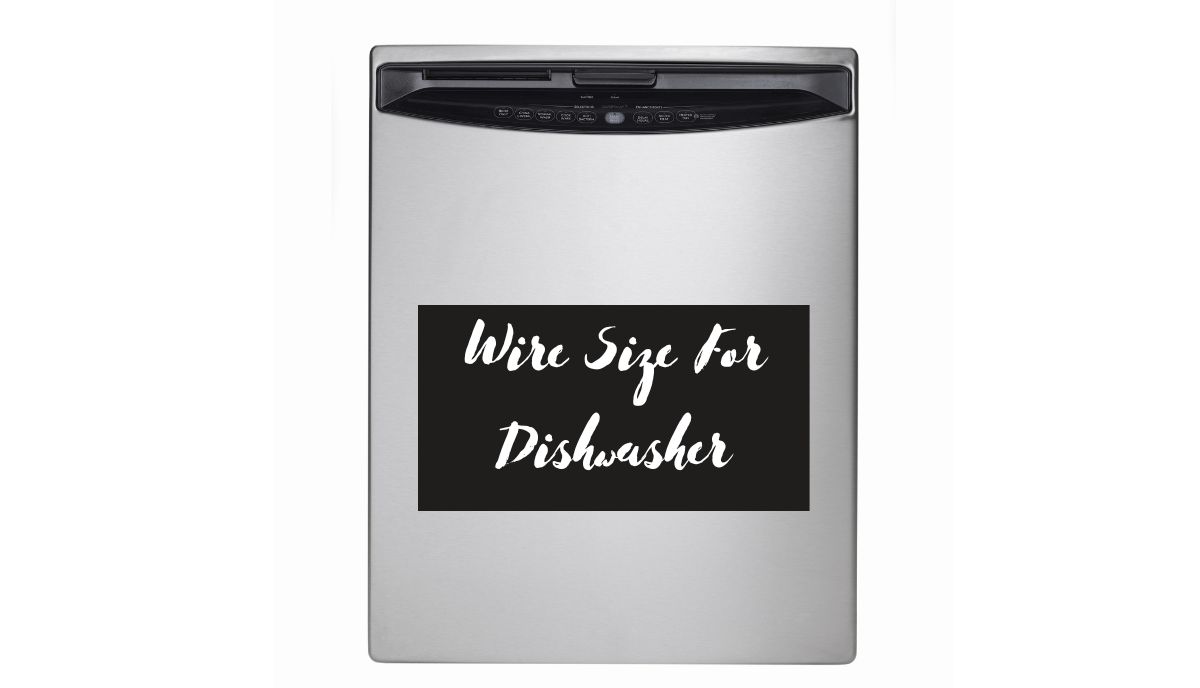A dishwasher that runs comfortably on a 15A circuit can use 14AWG, although 12AWG is the safer option because thicker conductors can carry more power without overheating.
Mohammad Amin has published a fascinating table on Research Gate that shows the attributes of different home appliances and devices. That table includes dishwashers. It associated them with a wattage of 500W, a current of 20A, a resistance of 0.0850, and a voltage drop of 7.38.
Those attributes and more are vital to your decision when you select a wire size for the dishwasher. Your house uses a circuit breaker to defend against overloads. The breaker is supposed to blow before excess current can cause the wire to overheat.
Unfortunately, circuit breakers are not perfect. This paper from the State Grid Shandong Electric Power Research Institute in China notes that breakers can fail because of frequent operations, resulting in mechanical deterioration and contact failure.
Without a functional circuit breaker, an appliance may draw more power than the wire gauge can tolerate. This can lead to a fire. You have more leeway with low-voltage devices such as bulbs and lamps.
You can’t say the same about dishwashers. These heavy-duty devices can destroy your home by exceeding the connected wire’s capacity. This is why the gauge is so important.
How Do I Determine The Right Wire Gauge For Connecting A Dishwasher?
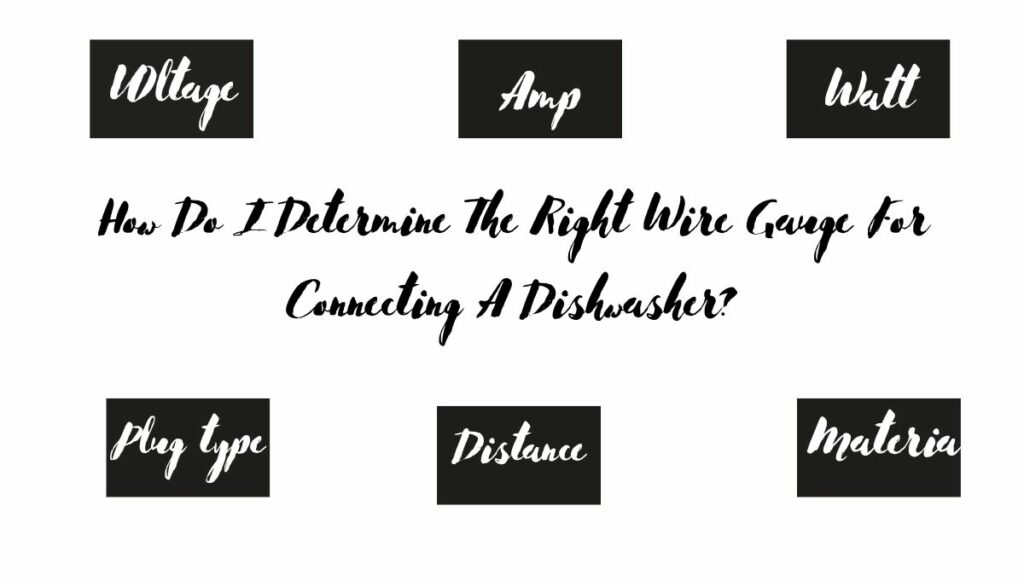
A dishwasher has numerous attributes, some of which will influence your desired wire gauge. Consider the following:
1). Voltage
If electricity is similar to water flowing through a pipe, the voltage is comparable to the pressure driving the water through the pipe. US households use 120V systems. However, the power enters a US home via two 120V legs.
You can combine them to provide 240V power. This assumes that your dishwasher requires 240 volts. While the voltage matters, it won’t affect the wire size.
2). Amps
The amps reveal the volume of current flowing to the dishwasher at any given moment. The dishwasher’s amperage is the most critical factor. It shouldn’t exceed the circuit’s amp rating.
For instance, you can’t connect a 20A dishwasher to a 15A circuit. In fact, you can’t even connect a 15A dishwasher to a 15A circuit. The load should only consume 80 percent of the circuit’s capacity.
This NEC 310-16 wire size chart shows the correct wire size for each amp rating. The table considers the wire type, material, and temperature rating. If you know the dishwasher’s amps, use the NEC table to find its corresponding wire size.
3). Watts
The wattage measures the electrical power, and for the most part, it won’t help you. A wire size chart matches each wire gauge to a corresponding amp rating. It doesn’t mention the wattage. That said, you can divide a dishwasher’s wattage by the voltage to get the amps.
4). Plug Type
The plug type only matters if you’ve decided to run the dishwasher through a wall socket as opposed to hard-wiring the device. The plug type will depend on the wall socket’s configuration. The voltage system you have will shape the wall socket configuration.
However, the plug type won’t influence the wire size. If the plug doesn’t fit the wall socket’s configuration, cut it off and install a new one. Either way, the wire size won’t change.
5). Distance
The resistance in a wire tends to increase with the distance. This makes long wires a fire hazard. A current traversing a long distance will generate more heat. And if you install a thin wire, a fire may start. You can mitigate this problem by increasing the wire size. Jump to the next gauge.
6). Material
You’ve probably noticed that wire size charts differentiate between copper and aluminum. Usually, wire size charts associate copper wires with higher amp ratings because copper is more conductive than aluminum.
However, this doesn’t mean you should use copper even though the material is more expensive. Consumers with budget constraints can install aluminum wiring for their dishwashers if they increase the gauge.
For instance, if you want to replace a 14AWG copper wire with aluminum, buy 12AWG aluminum wiring.
With all these factors in mind, how can you practically calculate the correct wire size for a dishwasher? The following steps will guide you:
- Determine the size of the load. This involves identifying the amps on the dishwasher’s nameplate. If it only shows the watts, change the wattage to the amperage.
- What is the allowable voltage drop? Test Book suggests keeping the voltage drop below 5 percent. EC&M came to the same conclusion. They based their answer on the NEC’s recommendation.
- Measure the distance the wire will cover. This will show you the wire length you need.
- Use Ohm’s Law to determine the maximum allowable resistance (Allowable voltage drop divided by the maximum current).
- Find the wire’s resistance using wire resistance charts like the one from the Engineering Tool Box and Hyper Physics.
- Use a wire size chart to find the correct wire gauge. The experts at Nassau National Cable want you to divide the maximum allowable resistance by the wire resistance (per unit length). Use the answer to find the correct gauge in a wire size chart.
- Consult your local code. Follow any suggestions it prescribes regarding the best wire size for different appliances.
What If I Use Thin Wire For Dishwasher?
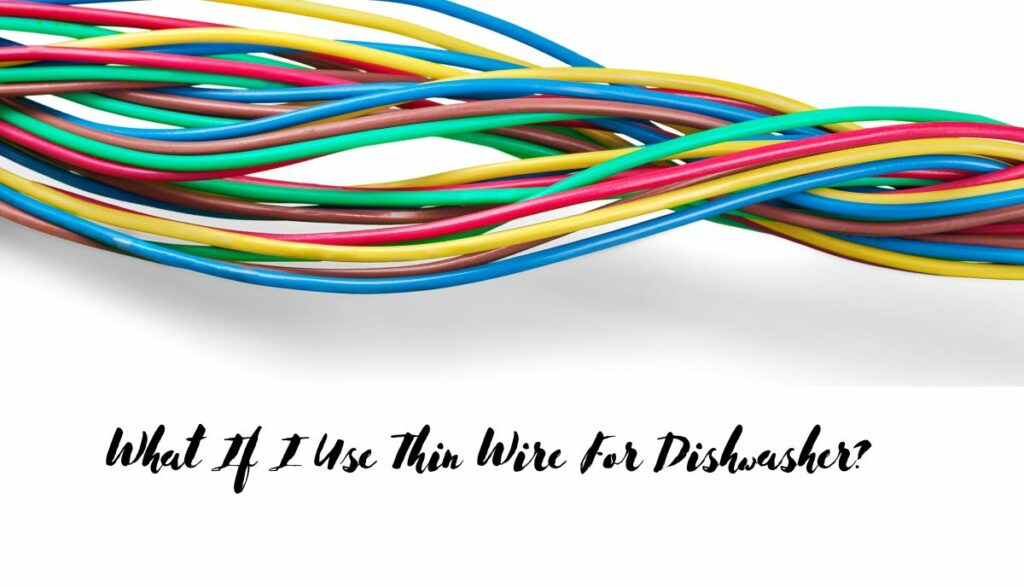
- The wire will overheat, melt, and start a fire because it carries more power than it can tolerate.
- A thin wire cannot deliver the full voltage a dishwasher requires. The appliance will refuse to start, or the dishwasher’s performance will deteriorate dramatically.
- A short circuit may occur because of the excess heat. The insulation will melt, allowing the bare conductors to touch.
- The appliance may sustain damage because you keep forcing it to run on insufficient power. The dishwasher’s lifespan will fall.
What Happens If I Use Thick Wires?
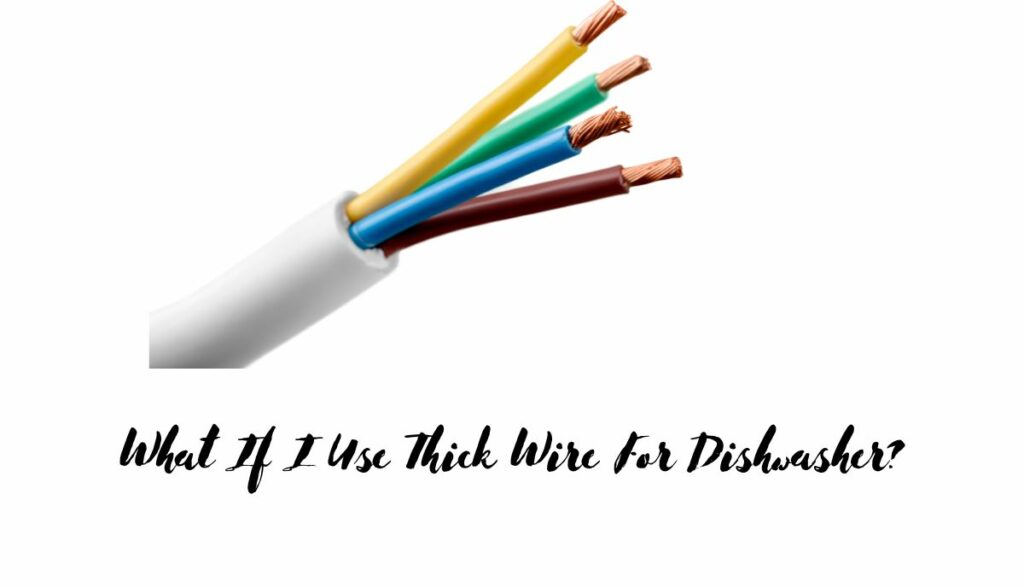
Thicker wires are the safest option. For instance, while 14AWG cabling is acceptable, and many experts recommend 12AWG, they won’t complain if you buy 10AWG for a dishwasher. The thicker the wire, the more electricity it can carry.
This makes overloading and overheating less likely. However, thicker gauges are more expensive. A thick wire wastes money unless it serves a specific purpose. That said, you’re better off buying a thicker wire than a thinner one.
Can I Use Existing Wiring For My Dishwasher, Or Should I Use A Different Wire Size?
The wiring shouldn’t concern you if the dishwasher has a power cord. You can trust the manufacturer to install a power cord whose gauge accommodates the dishwasher’s power requirements.
This assumes your home’s circuit is big enough to run the dishwasher without tripping the breaker.
The gauge becomes a problem if you intend to hardwire the appliance. In that case, you should buy new wiring whose size matches the dishwasher’s power requirements. If the dishwasher came with your house, why would you change anything?
Leave the wiring alone until you observe concerning symptoms, such as arcing, poor performance, the smell of burning rubber, etc. You should consult a professional. They will identify a connection option that fits your situation.
Don’t forget that ambient temperatures affect the gauge. Wires running through an insulated wall will vary in size from wires running out in the open. Unless you have the expertise to analyze the setting and identify a fitting wire type and gauge, you should leave this task in an electrician’s hands. Let them determine whether or not you need new wiring.
Do Dishwashers Typically Require A Dedicated Circuit With Specific Wire Sizing?
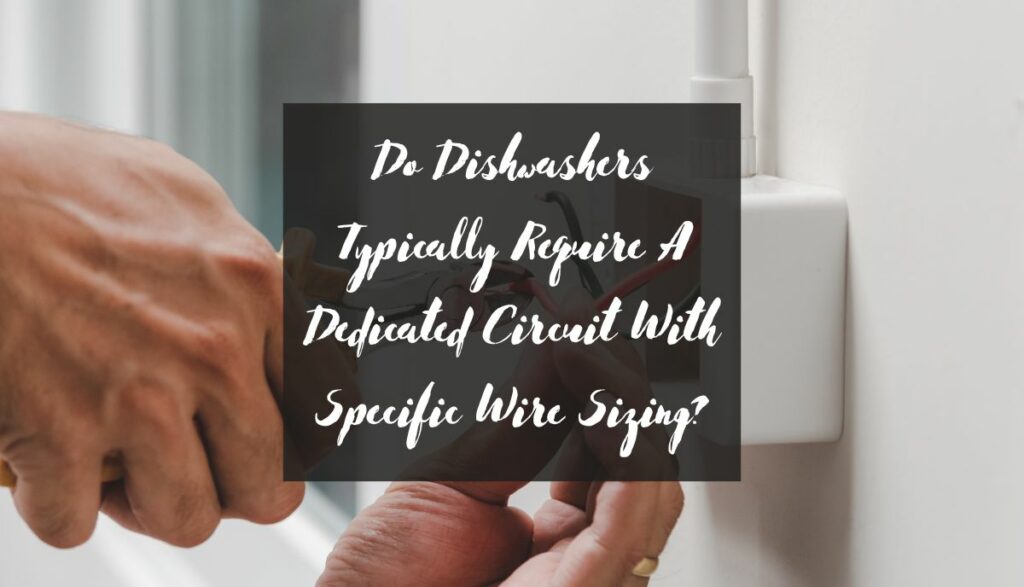
The safer option is a dedicated circuit. A dishwasher can share a circuit with low-duty items, such as lights and the TV. But dishwashers are heavy-duty devices.
Like any other appliance with heating elements and motors, a dishwasher may overload a shared circuit. Again, you should hire an electrician to assess your situation. Some dishwashers are relatively weak.
They don’t use enough power to overload a shared circuit. However, the other appliances on that shared circuit may present a challenge. Ultimately, the load shouldn’t exceed the circuit’s rating. You have some breathing room to experiment if the total load of the dishwasher and the other devices is less than 80 percent of the circuit they share.

